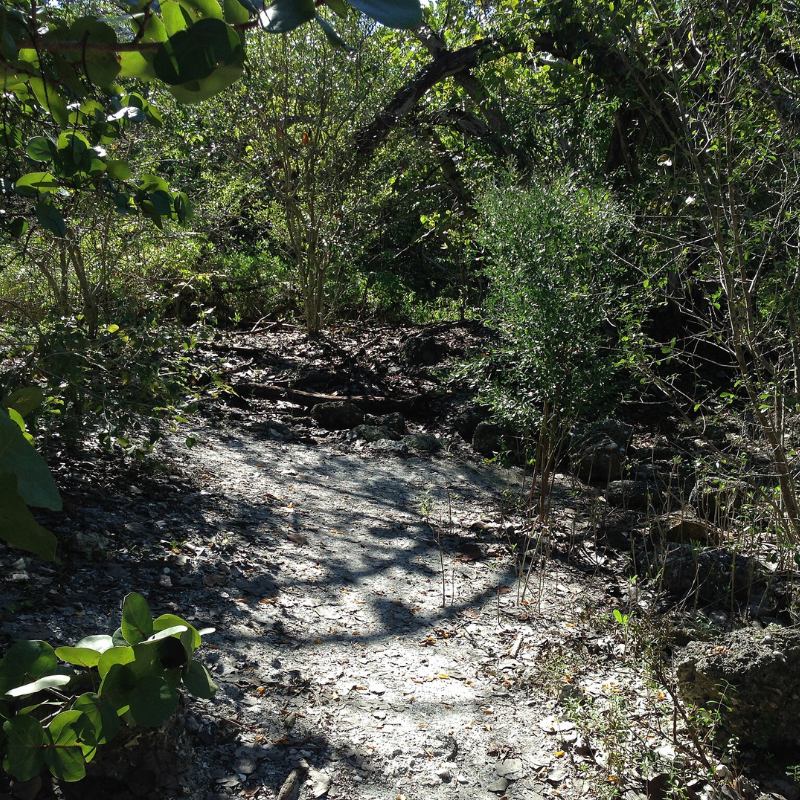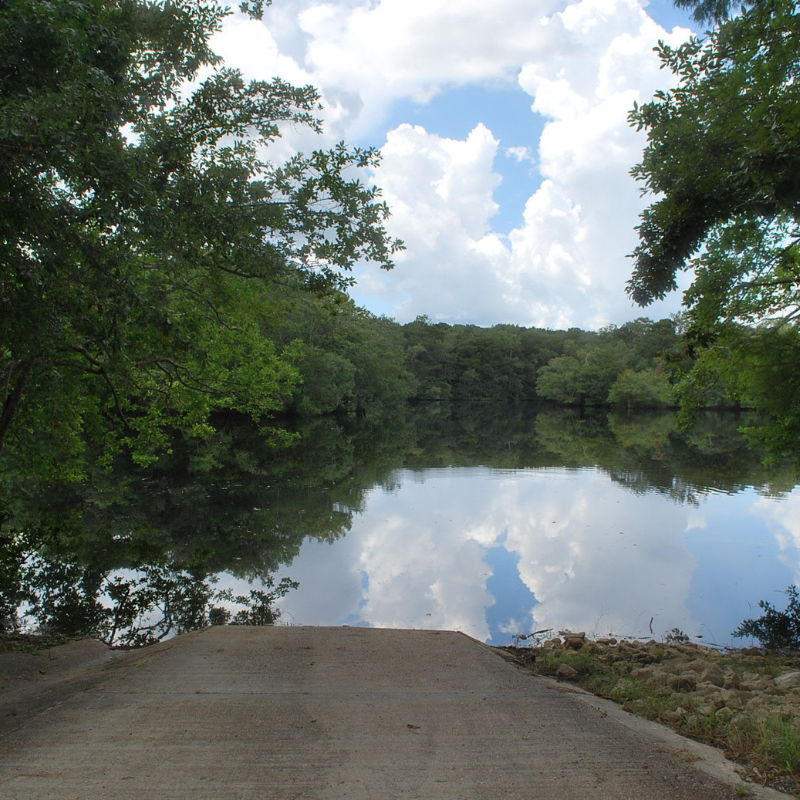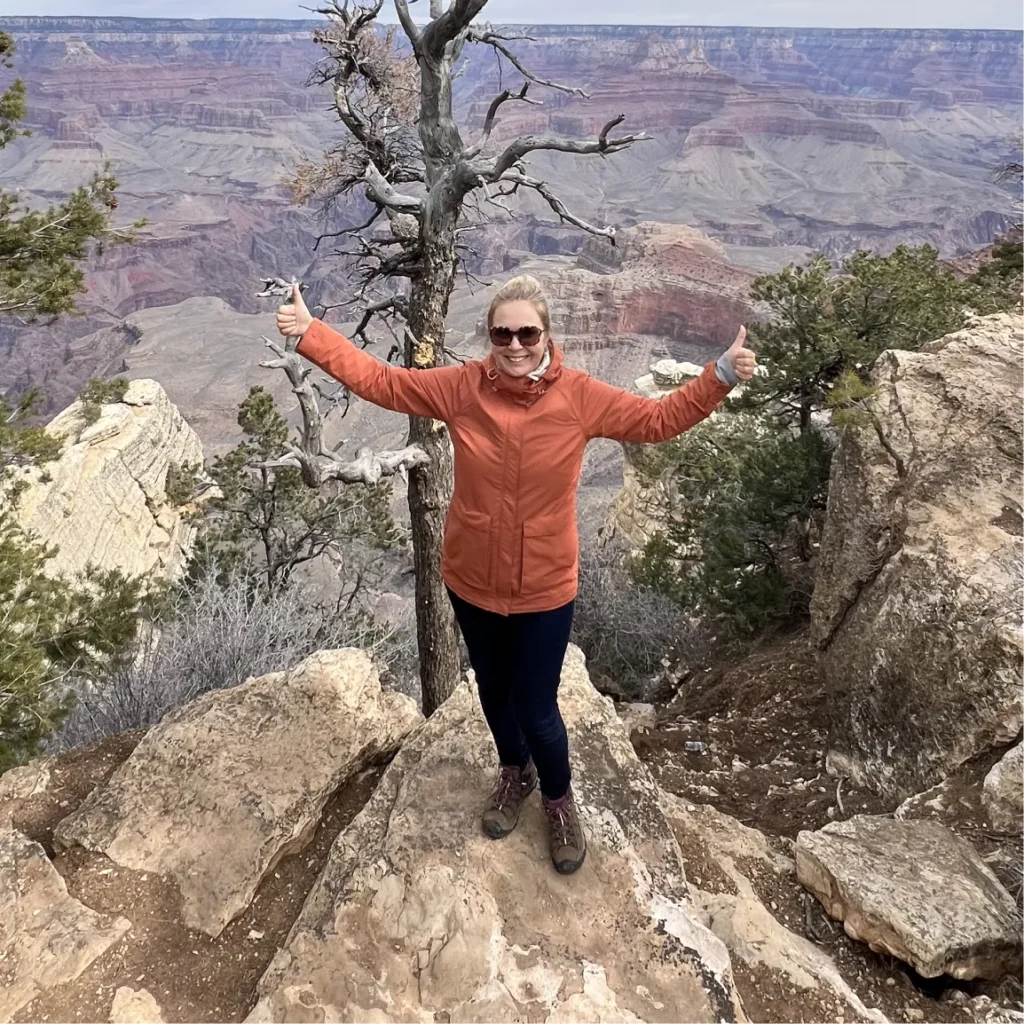Florida is full of wonderful places to see animals in their natural homes. The state is home to many national parks that protect these creatures. National parks in Florida offer a chance to see many kinds of animals safely. You can find animals like alligators, turtles, birds, and more.
Visiting these parks helps us learn how to care for nature. Each visit supports efforts to protect these animals and their habitats. By visiting, you also help local communities thrive. In this blog, we will look at some of the best parks in Florida for wildlife watching.
These parks are perfect for seeing animals up close in a safe way. Join us as we learn more about these national parks in Florida.
Best Time to Visit National Parks in Florida
Florida’s climate is subtropical, primarily divided into wet and dry seasons. Choosing the best time to visit Florida’s National Parks depends largely on your planned activities.
Reasons to Visit During Florida’s Dry Season (November to April)
The dry season is an ideal time to visit Florida’s national parks because:
- The weather is cooler and less humid, making outdoor activities more comfortable.
- Fewer bugs, especially mosquitoes, enhance the outdoor experience.
- The weather is generally stable, with minimal chances of rain and thunderstorms.
However, these advantages mean the dry season is also the busiest. Be prepared for crowds, and you’ll likely need to book accommodations and tours well in advance.
Florida’s Wet Season (May to October)
The wet season presents a stark contrast:
- Expect high temperatures and very high humidity (up to 90%).
- Afternoon storms are common, potentially disrupting outdoor plans.
- Mosquitoes are more prevalent and can be quite bothersome.
On the positive side, there are generally fewer visitors during these months, which might appeal if you prefer a less crowded experience.
Top 15 National Parks to Visit in Florida
Florida is home to many stunning national parks and attractions. Each offers a unique glimpse into the state’s rich natural beauty and diverse wildlife. From the vast wetlands of the Everglades to the clear waters of Biscayne, there are endless opportunities for adventure.
Whether you enjoy hiking, bird watching, or snorkeling, these parks have something for everyone. Let’s explore these top 15 national parks in Florida that you won’t want to miss.
Big Cypress National Preserve

Big Cypress National Preserve protects a large area of swamp land. It’s a neighbor to the Everglades and shares much of its wildlife. The preserve is a vital water source for the region. It is also a wonderful place for wildlife watching. Here, you can see animals in their natural swamp habitat. The preserve is open year-round, giving visitors a chance to experience its beauty in all seasons. Exploring this preserve offers a unique look at Florida’s wetlands.
Fun Facts
- Big Cypress covers over 729,000 acres of land.
- It was the first national preserve in the United States.
- The area helps protect the water quality of the Everglades.
- You might see panthers and black bears here.
Biscayne National Park

Biscayne National Park is mostly underwater and a treasure for marine enthusiasts. It lies just a few miles from Miami. This park protects beautiful coral reefs, islands, and shoreline mangrove forests. It offers a rare glimpse into aquatic wildlife. Visitors can snorkel, dive, and boat in crystal-clear waters. This is a unique chance to explore vibrant underwater ecosystems. The park showcases the importance of protecting marine environments.
Fun Facts
- 95% of Biscayne National Park is water.
- The park is home to over 500 species of fish.
- Historic shipwrecks within the park create artificial reefs.
- Biscayne National Park also protects endangered species like manatees.
Dry Tortugas National Park

Dry Tortugas National Park is remote and remarkable. It sits about 70 miles west of Key West. The park is mostly open water with seven small islands. It is known for its famous Fort Jefferson, clear blue waters, and coral reefs. Visitors often go there by boat or seaplane. It’s a popular spot for snorkeling, bird watching, and exploring historic sites. The park’s isolation helps preserve its untouched beauty. Dry Tortugas offer a peaceful escape into nature.
Fun Facts
- Fort Jefferson is one of the largest coastal forts.
- The park is a prime spot for bird migration watching.
- Its waters have vibrant coral reefs teeming with marine life.
- Dry Tortugas was designated as a national park in 1992.
Everglades National Park

Everglades National Park is vast and vital to Florida’s ecosystem. It covers 1.5 million acres, spanning wetlands and forests. This park is crucial for protecting endangered species like the manatee and the Florida panther. The Everglades is known for its slow-flowing river that covers most of the park. Visitors enjoy hiking, bird watching, and boat tours. The unique landscape offers a glimpse into a diverse and delicate ecosystem. It’s a must-visit for nature lovers and adventure seekers alike.
Fun Facts
- The Everglades is the largest tropical wilderness in the U.S.
- It has been designated as a World Heritage Site.
- Over 360 bird species can be seen here.
- The park is known for its large population of American alligators.
Silver Springs State Park

Silver Springs State Park is famous for its crystal-clear springs. Located in central Florida, it’s one of the oldest attractions in the state. The park offers stunning views of natural springs and lush vegetation. Visitors can enjoy glass-bottom boat tours to see underwater life without getting wet. It’s a perfect place for kayaking, bird watching, and hiking. Silver Springs showcases the beauty and serenity of Florida’s freshwater ecosystems, making it a great destination for families and nature enthusiasts.
Fun Facts
- The park is home to the largest artesian spring formation in the world.
- Glass-bottom boat tours started here in the 1870s.
- It features a variety of wildlife, including wild monkeys.
- The springs pump out about 550 million gallons of water daily.
Point Washington State Forest

Point Washington State Forest offers a blend of coastal and forest ecosystems. Located in the panhandle of Florida, it spans over 15,000 acres. This forest is a haven for those who love the outdoors. It features miles of trails for hiking, biking, and bird watching. The forest also supports a variety of wildlife and plant species. Its diverse habitats make it a great place for educational trips and nature photography. Visitors appreciate the peace and natural beauty of Point Washington.
Fun Facts
- The forest contains ten distinct natural communities.
- It is a popular spot for birding, especially during migration seasons.
- Rare species like the gopher tortoise and red-cockaded woodpecker live here.
- The forest plays a crucial role in protecting the area’s water quality.
Fort Matanzas National Monument

Fort Matanzas National Monument stands as a guard over Florida’s historic coast. Located just south of St. Augustine, it was built in 1742 to protect the city from British attacks. This small fort offers a glimpse into the past with its well-preserved structure. Visitors can take a free ferry ride to the fort, exploring its history and enjoying views of the surrounding marshes. The area also supports diverse wildlife, making it a scenic spot for nature lovers.
Fun Facts
- Fort Matanzas was built using coquina, a type of limestone.
- The fort has never faced a military challenge.
- It offers a unique view of Florida’s coastal ecosystems.
- The monument is part of the Atlantic Flyway, important for bird migrations.
Gulf Islands National Seashore

Gulf Islands National Seashore preserves many of the Gulf of Mexico’s barrier islands. Extending from Florida into Mississippi, it includes pristine beaches, historic forts, and diverse marine habitats. Visitors enjoy swimming, fishing, hiking, and bird watching. The seashore offers a rare look at unspoiled coastal landscapes and provides educational opportunities about conservation and history. Its quiet, sandy stretches are perfect for those seeking peace or adventure in nature.
Fun Facts
- The seashore includes parts of two states: Florida and Mississippi.
- Historic Fort Pickens is located within the park.
- The area is a nesting ground for several sea turtle species.
- It’s a popular spot for viewing both migratory and coastal birds.
Fort Caroline National Memorial

Fort Caroline National Memorial marks the site of the first French colony in the present-day United States. Located in Jacksonville, Florida, it commemorates the short-lived French presence in the sixteenth century. The memorial includes a reconstructed fort that offers insights into the lives of the French settlers and their interactions with indigenous peoples. Visitors can explore exhibits, walking trails, and enjoy panoramic views of the river. It’s a place rich in history and natural beauty, perfect for learning and reflection.
Fun Facts
- Fort Caroline was established in 1564 by French Huguenots.
- The fort overlooks the scenic St. Johns River.
- It includes a visitor center with artifacts and historical exhibits.
- The site hosts reenactments and living history events.
Canaveral National Seashore

Canaveral National Seashore offers a unique blend of natural and space history. Located on Florida’s east coast, it features miles of untouched beaches. It is one of the longest stretches of undeveloped land on the Florida coast. Visitors enjoy sunbathing, bird watching, and sea turtle sightings. The seashore is also near the Kennedy Space Center, adding a unique backdrop to its natural beauty. This location is ideal for those who appreciate pristine coastal environments and the wonders of space exploration.
Fun Facts
- Canaveral is home to more than 1,000 plant species and 310 bird species.
- It’s a vital nesting ground for loggerhead and green sea turtles.
- The seashore was established in 1975.
- It offers views of rocket launches from the nearby Kennedy Space Center.
Castillo de San Marcos National Monument

Castillo de San Marcos National Monument in St. Augustine stands as the oldest masonry fort in the continental United States. Built by the Spanish in the 17th century to defend Florida and the Atlantic trade route, it is a star-shaped fortress made of coquina, a unique limestone. Visitors can explore the bastions, watch live reenactments, and learn about the fort’s storied history through interactive exhibits. This historic site offers a fascinating glimpse into the past, showing how architecture and military strategy evolved over centuries.
Fun Facts
- Castillo de San Marcos is over 345 years old.
- The walls were made from coquina, a type of sedimentary rock.
- It served under five different flags: Spanish, British, United States, Confederate, and again the United States.
- The fort has never been conquered despite multiple sieges.
Timucuan Ecological and Historic Preserve

The Timucuan Ecological and Historic Preserve covers vast areas in Jacksonville, Florida, offering a mix of historical sites and untouched natural landscapes. This preserve protects wetlands, waterways, and other habitats that are crucial for wildlife. It’s named after the Timucua Native Americans who once thrived here. Visitors can explore various historic sites, including the Kingsley Plantation, and enjoy activities like hiking, kayaking, and bird watching. The preserve provides a unique opportunity to learn about both the natural and cultural history of the area.
Fun Facts
- The preserve includes over 46,000 acres.
- Kingsley Plantation is part of the preserve and features an original slave cabin.
- It’s one of the last unspoiled coastal wetlands on the Atlantic Coast.
- The area supports a diverse range of wildlife, including numerous bird species.
De Soto National Memorial

De Soto National Memorial, located in Bradenton, Florida, commemorates the 1539 landing of Hernando de Soto and his crew, who were among the first Europeans to explore the southern United States. This park offers a glimpse into the early interactions between European explorers and Indigenous peoples. Visitors can walk along the beautiful nature trails, watch live historical reenactments, and participate in hands-on exhibits at the visitor center. The park aims to educate visitors about this pivotal moment in history and its impacts.
Fun Facts
- The memorial marks the starting point of de Soto’s extensive expedition.
- It features an annual reenactment of de Soto’s landing.
- The park includes a coastal mangrove forest.
- Educational programs often focus on 16th-century armor and weaponry.
Apalachicola National Forest

Apalachicola National Forest is the largest U.S. National Forest in Florida, sprawling across the panhandle. This forest is a mosaic of pines, swamps, and scenic rivers, providing a sanctuary for a diverse range of wildlife. It’s a popular spot for hiking, camping, and fishing, offering visitors a chance to immerse themselves in a robust and serene natural environment. The forest also plays a crucial role in protecting the water quality of the region’s rivers and streams, supporting both ecological health and local water resources.
Fun Facts
- Apalachicola National Forest covers over 632,000 acres.
- It is home to the rare Florida panther and red-cockaded woodpecker.
- The forest is a key habitat for the gopher tortoise.
- It features the largest population of the pitcher plant in the northern Gulf Coast region.
Bahia Honda State Park

Bahia Honda State Park is renowned for its beautiful sandy beaches and clear waters, making it one of the most popular state parks in Florida. Located in the Florida Keys, it offers excellent snorkeling, swimming, and kayaking opportunities. The park is a picturesque spot for both relaxation and adventure, with panoramic views of the Atlantic Ocean and the Gulf of Mexico. Its remote location and natural beauty provide a perfect escape for those looking to enjoy the tranquility of nature.
Fun Facts
- Bahia Honda has some of the deepest natural channels in the Florida Keys.
- The park is known for its iconic old railroad bridge.
- It offers some of the best stargazing in the area due to minimal light pollution.
- The park is a key nesting site for several species of sea turtles.
Final Thoughts
National parks in Florida are amazing places to visit. They offer beautiful scenery and incredible wildlife. Whether you enjoy hiking, swimming, or just relaxing in nature, these parks have something special. Visiting them helps protect these wonderful places for the future.
We hope you feel inspired to explore and appreciate the beauty of Florida’s parks. Enjoy your trip and make lasting memories!











8 thoughts on “15 Must-See National Parks In Florida For The Ultimate Wildlife Watching”
Just got back from a trip to the Everglades, and it was mind-blowing! Saw your list and realized I’ve only scratched the surface. Canaveral next? Thx for the inspo, Julia!
Love seeing people excited about our parks! Remember to practice Leave No Trace principles 🙂
Canaveral’s seashore is stunning, especially at sunrise. You won’t regret it!